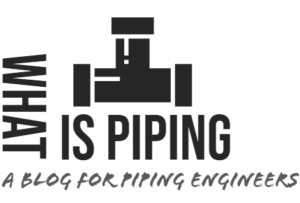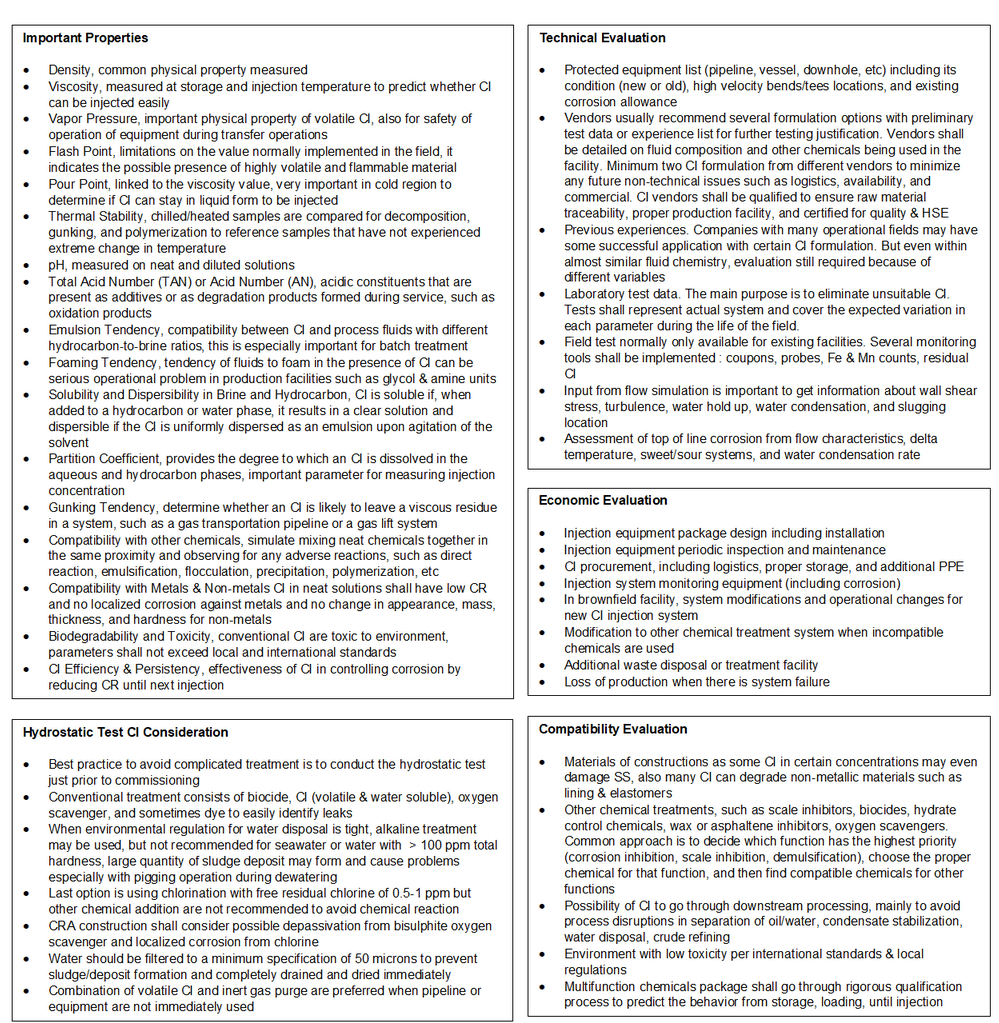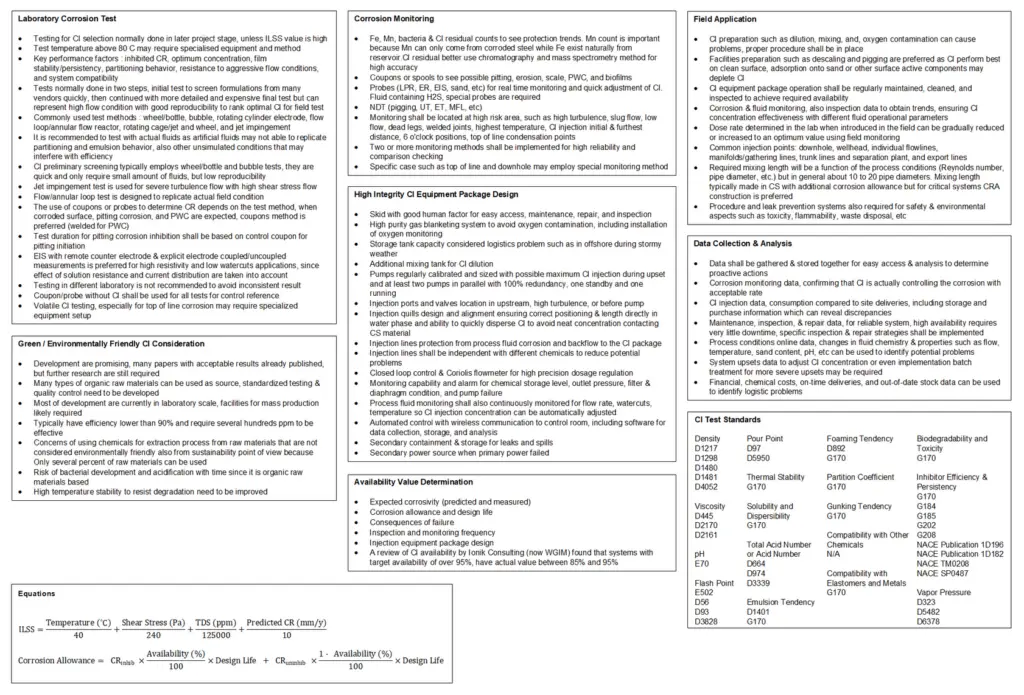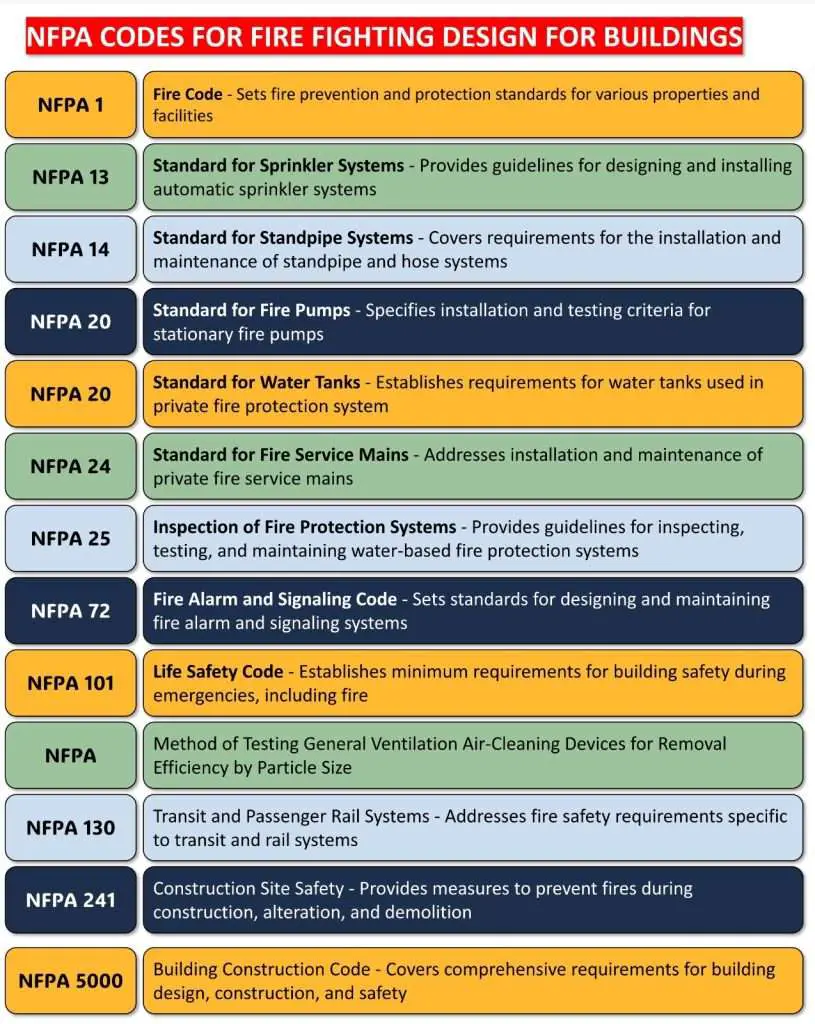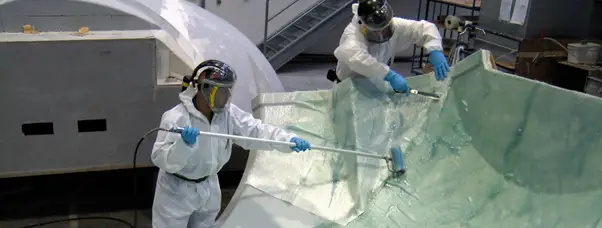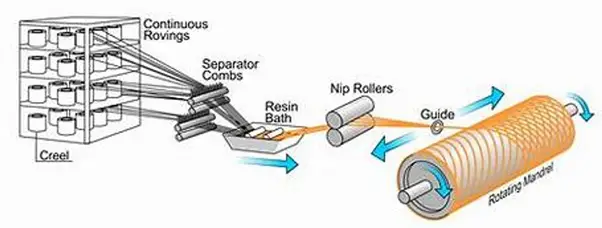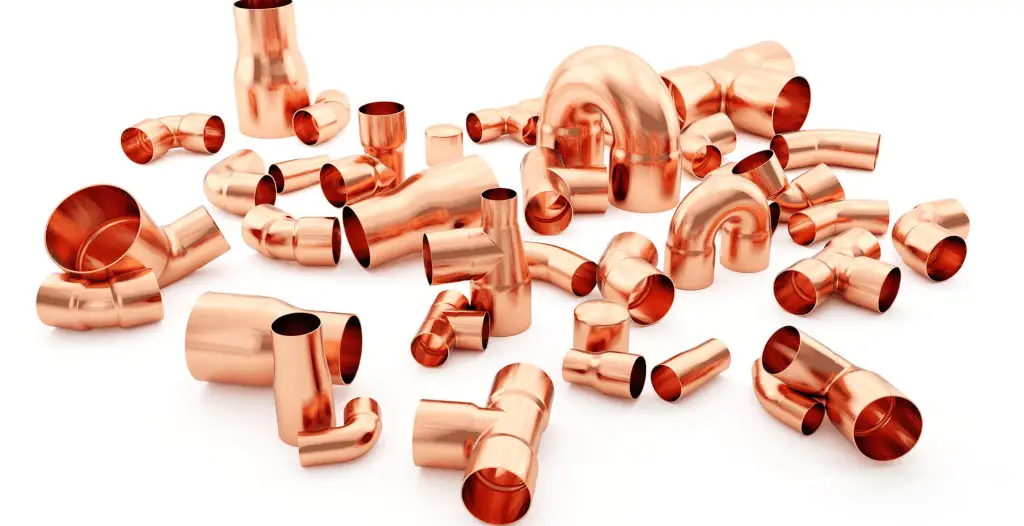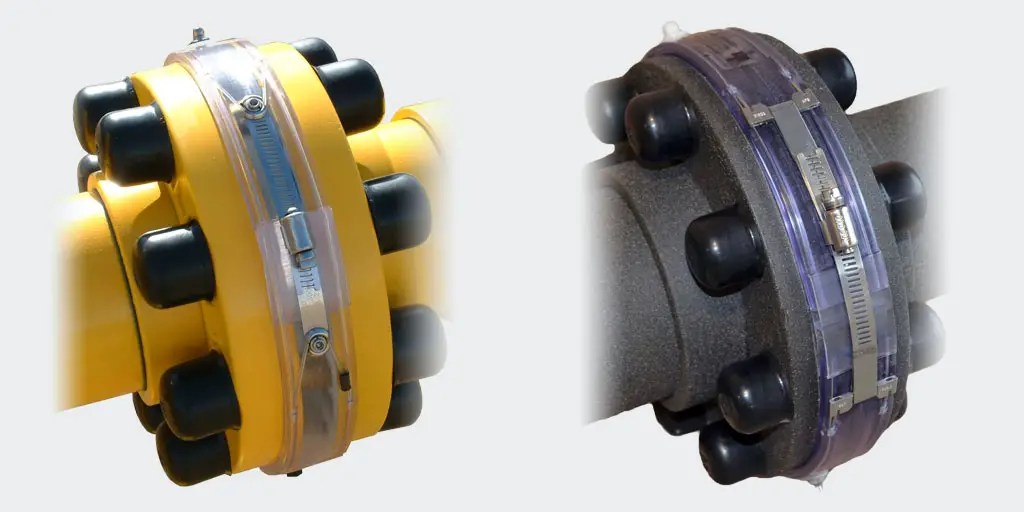| Name of the NFPA Code/Standard | NFPA Code/Standard Number |
| Fire Code | NFPA 1 |
| Hydrogen Technologies Code | NFPA 2 |
| Standard for Commissioning of Fire Protection and Life Safety Systems | NFPA 3 |
| Standard for Integrated Fire Protection and Life Safety System Testing | NFPA 4 |
| Standard for Portable Fire Extinguishers | NFPA 10 |
| Standard for Low-, Medium-, and High-Expansion Foam | NFPA 11 |
| Standard for Medium- and High-Expansion Foam Systems | NFPA 11A |
| Standard for Mobile Foam Apparatus | NFPA 11C |
| Standard on Carbon Dioxide Extinguishing Systems | NFPA 12 |
| Standard on Halon 1301 Fire Extinguishing Systems | NFPA 12A |
| Standard for the Installation of Sprinkler Systems | NFPA 13 |
| Standard for the Installation of Sprinkler Systems in One- and Two-Family Dwellings and Manufactured Homes | NFPA 13D |
| Recommended Practice for Fire Department Operations in Properties Protected by Sprinkler and Standpipe Systems | NFPA 13E |
| Standard for the Installation of Sprinkler Systems in Low-Rise Residential Occupancies | NFPA 13R |
| Standard for the Installation of Standpipe and Hose Systems | NFPA 14 |
| Standard for Water Spray Fixed Systems for Fire Protection | NFPA 15 |
| Standard for the Installation of Foam-Water Sprinkler and Foam-Water Spray Systems | NFPA 16 |
| Standard for Dry Chemical Extinguishing Systems | NFPA 17 |
| Standard for Wet Chemical Extinguishing Systems | NFPA 17A |
| Standard on Wetting Agents | NFPA 18 |
| Standard on Water Additives for Fire Control and Vapor Mitigation | NFPA 18A |
| Standard for the Installation of Stationary Pumps for Fire Protection | NFPA 20 |
| Standard for Water Tanks for Private Fire Protection | NFPA 22 |
| Standard for the Installation of Private Fire Service Mains and Their Appurtenances | NFPA 24 |
| Standard for the Inspection, Testing, and Maintenance of Water-Based Fire Protection Systems | NFPA 25 |
| Flammable and Combustible Liquids Code | NFPA 30 |
| Code for Motor Fuel Dispensing Facilities and Repair Garages | NFPA 30A |
| Code for the Manufacture and Storage of Aerosol Products | NFPA 30B |
| Standard for the Installation of Oil-Burning Equipment | NFPA 31 |
| Standard for Drycleaning Facilities | NFPA 32 |
| Standard for Spray Application Using Flammable or Combustible Materials | NFPA 33 |
| Standard for Dipping, Coating, and Printing Processes Using Flammable or Combustible Liquids | NFPA 34 |
| Standard for the Manufacture of Organic Coatings | NFPA 35 |
| Standard for Solvent Extraction Plants | NFPA 36 |
| Standard for the Installation and Use of Stationary Combustion Engines and Gas Turbines | NFPA 37 |
| Standard for Firefighters, Fire Apparatus Drivers/Operators, Airport Firefighters, and Marine Firefighting for Land-Based Firefighters Professional Qualifications | NFPA 40 |
| Code for the Storage of Pyroxylin Plastic | NFPA 42 |
| Standard on Fire Protection for Laboratories Using Chemicals | NFPA 45 |
| Recommended Safe Practice for Storage of Forest Products | NFPA 46 |
| Standard for Bulk Oxygen Systems at Consumer Sites | NFPA 50 |
| Standard for Gaseous Hydrogen Systems at Consumer Sites | NFPA 50A |
| Standard for Liquefied Hydrogen Systems at Consumer Sites | NFPA 50B |
| Standard for the Design and Installation of Oxygen-Fuel Gas Systems for Welding, Cutting, and Allied Processes | NFPA 51 |
| Standard for Acetylene Cylinder Charging Plants | NFPA 51A |
| Standard for Fire Prevention During Welding, Cutting, and Other Hot Work | NFPA 51B |
| Vehicular Natural Gas Fuel Systems Code | NFPA 52 |
| Recommended Practice on Materials, Equipment, and Systems Used in Oxygen-Enriched Atmospheres | NFPA 53 |
| National Fuel Gas Code | NFPA 54 |
| Compressed Gases and Cryogenic Fluids Code | NFPA 55 |
| Standard for Fire and Explosion Prevention During Cleaning and Purging of Flammable Gas Piping Systems | NFPA 56 |
| Liquefied Natural Gas (LNG) Vehicular Fuel Systems Code | NFPA 57 |
| Liquefied Petroleum Gas Code | NFPA 58 |
| Utility LP-Gas Plant Code | NFPA 59 |
| Standard for the Production, Storage, and Handling of Liquefied Natural Gas (LNG) | NFPA 59A |
| Standard for the Prevention of Fires and Dust Explosions in Agricultural and Food Processing Facilities | NFPA 61 |
| Guide on Explosion Protection for Gaseous Mixtures in Pipe Systems | NFPA 67 |
| Standard on Explosion Protection by Deflagration Venting | NFPA 68 |
| Standard on Explosion Prevention Systems | NFPA 69 |
| National Electrical Code® | NFPA 70® |
| National Electrical Code® Requirements for One- and Two-Family Dwellings | NFPA 70A |
| Standard for Electrical Equipment Maintenance | NFPA 70B |
| Standard for Electrical Safety in the Workplace® | NFPA 70E® |
| National Fire Alarm and Signaling Code® | NFPA 72® |
| Standard for Electrical Inspections for Existing Dwellings | NFPA 73 |
| Standard for the Fire Protection of Information Technology Equipment | NFPA 75 |
| Standard for the Fire Protection of Telecommunications Facilities | NFPA 76 |
| Recommended Practice on Static Electricity | NFPA 77 |
| Guide on Electrical Inspections | NFPA 78 |
| Electrical Standard for Industrial Machinery | NFPA 79 |
| Standard for Fire Doors and Other Opening Protectives | NFPA 80 |
| Recommended Practice for Protection of Buildings from Exterior Fire Exposures | NFPA 80A |
| Standard on Incinerators and Waste and Linen Handling Systems and Equipment | NFPA 82 |
| Boiler and Combustion Systems Hazards Code | NFPA 85 |
| Standard for Ovens and Furnaces | NFPA 86 |
| Standard for Industrial Furnaces Using a Special Processing Atmosphere | NFPA 86C |
| Standard for Industrial Furnaces Using Vacuum as an Atmosphere | NFPA 86D |
| Standard for Fluid Heaters | NFPA 87 |
| Standard for Parking Structures | NFPA 88A |
| Standard for Repair Garages | NFPA 88B |
| Standard for the Installation of Air-Conditioning and Ventilating Systems | NFPA 90A |
| Standard for the Installation of Warm Air Heating and Air-Conditioning Systems | NFPA 90B |
| Standard for Exhaust Systems for Air Conveying of Vapors, Gases, Mists, and Particulate Solids | NFPA 91 |
| Standard for Smoke Control Systems | NFPA 92 |
| Standard for Smoke-Control Systems Utilizing Barriers and Pressure Differences | NFPA 92A |
| Standard for Smoke Management Systems in Malls, Atria, and Large Spaces | NFPA 92B |
| Standard for Ventilation Control and Fire Protection of Commercial Cooking Operations | NFPA 96 |
| Standard Glossary of Terms Relating to Chimneys, Vents, and Heat-Producing Appliances | NFPA 97 |
| Health Care Facilities Code | NFPA 99 |
| Standard for Hypobaric Facilities | NFPA 99B |
| Life Safety Code® | NFPA 101® |
| Guide on Alternative Approaches to Life Safety | NFPA 101A |
| Code for Means of Egress for Buildings and Structures | NFPA 101B |
| Standard for Grandstands, Folding and Telescopic Seating, Tents, and Membrane Structures | NFPA 102 |
| Standard for Smoke Door Assemblies and Other Opening Protectives | NFPA 105 |
| Standard for Emergency and Standby Power Systems | NFPA 110 |
| Standard on Stored Electrical Energy Emergency and Standby Power Systems | NFPA 111 |
| Standard for Laser Fire Protection | NFPA 115 |
| Standard for Fire Prevention and Control in Coal Mines | NFPA 120 |
| Standard on Fire Protection for Self-Propelled and Mobile Surface Mining Equipment | NFPA 121 |
| Standard for Fire Prevention and Control in Metal/Nonmetal Mining and Metal Mineral Processing Facilities | NFPA 122 |
| Standard for Fire Prevention and Control in Underground Bituminous Coal Mines | NFPA 123 |
| Standard for Fixed Guideway Transit and Passenger Rail Systems | NFPA 130 |
| Standard on Motion Picture and Television Production Studio Soundstages, Approved Production Facilities, and Production Locations | NFPA 140 |
| Fire and Life Safety in Animal Housing Facilities Code | NFPA 150 |
| Standard for the Use of Flame Effects Before an Audience | NFPA 160 |
| Standard for Fire Safety and Emergency Symbols | NFPA 170 |
| Standard for Hanging and Bracing of Fire Suppression Systems | NFPA 200 |
| Guide on Roof Coverings and Roof Deck Constructions | NFPA 203 |
| Standard for Smoke and Heat Venting | NFPA 204 |
| Standard for Chimneys, Fireplaces, Vents, and Solid Fuel-Burning Appliances | NFPA 211 |
| Standard on Water-Cooling Towers | NFPA 214 |
| Standard on Types of Building Construction | NFPA 220 |
| Standard for High Challenge Fire Walls, Fire Walls, and Fire Barrier Walls | NFPA 221 |
| Model Manufactured Home Installation Standard | NFPA 225 |
| Standard for the Fire Protection of Storage | NFPA 230 |
| Standard for General Storage | NFPA 231 |
| Standard for Rack Storage of Materials | NFPA 231C |
| Standard for Storage of Rubber Tires | NFPA 231D |
| Recommended Practice for the Storage of Baled Cotton | NFPA 231E |
| Standard for the Storage of Roll Paper | NFPA 231F |
| Standard for the Protection of Records | NFPA 232 |
| Guide for Fire Protection for Archives and Records Centers | NFPA 232A |
| Standard for Safeguarding Construction, Alteration, and Demolition Operations | NFPA 241 |
| Standard Methods of Tests of Fire Resistance of Building Construction and Materials | NFPA 251 |
| Standard Methods of Fire Tests of Door Assemblies | NFPA 252 |
| Standard Method of Test for Critical Radiant Flux of Floor Covering Systems Using a Radiant Heat Energy Source | NFPA 253 |
| Standard Method of Test of Surface Burning Characteristics of Building Materials | NFPA 255 |
| Standard Methods of Fire Tests of Roof Coverings | NFPA 256 |
| Standard on Fire Test for Window and Glass Block Assemblies | NFPA 257 |
| Recommended Practice for Determining Smoke Generation of Solid Materials | NFPA 258 |
| Standard Test Method for Potential Heat of Building Materials | NFPA 259 |
| Standard Methods of Tests and Classification System for Cigarette Ignition Resistance of Components of Upholstered Furniture | NFPA 260 |
| Standard Method of Test for Determining Resistance of Mock-Up Upholstered Furniture Material Assemblies to Ignition by Smoldering Cigarettes | NFPA 261 |
| Standard Method of Test for Flame Travel and Smoke of Wires and Cables for Use in Air-Handling Spaces | NFPA 262 |
| Standard Methods of Fire Tests for Evaluating Room Fire Growth Contribution of Textile or Expanded Vinyl Wall Coverings on Full Height Panels and Walls | NFPA 265 |
| Standard Method of Test for Fire Characteristics of Upholstered Furniture Exposed to Flaming Ignition Source | NFPA 266 |
| Standard Method of Test for Fire Characteristics of Mattresses and Bedding Assemblies Exposed to Flaming Ignition Source | NFPA 267 |
| Standard Test Method for Determining Ignitability of Exterior Wall Assemblies Using a Radiant Heat Energy Source | NFPA 268 |
| Standard Test Method for Developing Toxic Potency Data for Use in Fire Hazard Modeling | NFPA 269 |
| Standard Test Method for Measurement of Smoke Obscuration Using a Conical Radiant Source in a Single Closed Chamber | NFPA 270 |
| Standard Method of Test for Heat and Visible Smoke Release Rates for Materials and Products Using an Oxygen Consumption Calorimeter | NFPA 271 |
| Standard Method of Test for Heat and Visible Smoke Release Rates for Upholstered Furniture Components or Composites and Mattresses Using an Oxygen Consumption Calorimeter | NFPA 272 |
| Standard Test Method to Evaluate Fire Performance Characteristics of Pipe Insulation | NFPA 274 |
| Standard Method of Fire Tests for the Evaluation of Thermal Barriers | NFPA 275 |
| Standard Method of Fire Test for Determining the Heat Release Rate of Roofing Assemblies with Combustible Above-Deck Roofing Components | NFPA 276 |
| Standard Methods of Tests for Evaluating Fire and Ignition Resistance of Upholstered Furniture Using a Flaming Ignition Source | NFPA 277 |
| Standard Fire Test Method for Evaluation of Fire Propagation Characteristics of Exterior Wall Assemblies Containing Combustible Components | NFPA 285 |
| Standard Methods of Fire Tests for Evaluating Contribution of Wall and Ceiling Interior Finish to Room Fire Growth | NFPA 286 |
| Standard Test Methods for Measurement of Flammability of Materials in Cleanrooms Using a Fire Propagation Apparatus (FPA) | NFPA 287 |
| Standard Methods of Fire Tests of Horizontal Fire Door Assemblies Installed in Horizontal Fire Resistance-Rated Assemblies | NFPA 288 |
| Standard Method of Fire Test for Individual Fuel Packages | NFPA 289 |
| Standard for Fire Testing of Passive Protection Materials for Use on LP-Gas Containers | NFPA 290 |
| Recommended Practice for Water Flow Testing and Marking of Hydrants | NFPA 291 |
| Standard for Wildfire Control | NFPA 295 |
| Guide on Principles and Practices for Communications Systems | NFPA 297 |
| Standard on Foam Chemicals for Wildland Fire Control | NFPA 298 |
| Standard for Protection of Life and Property from Wildfire | NFPA 299 |
| Code for Safety to Life from Fire on Merchant Vessels | NFPA 301 |
| Fire Protection Standard for Pleasure and Commercial Motor Craft | NFPA 302 |
| Fire Protection Standard for Marinas and Boatyards | NFPA 303 |
| Standard for the Control of Gas Hazards on Vessels | NFPA 306 |
| Standard for the Construction and Fire Protection of Marine Terminals, Piers, and Wharves | NFPA 307 |
| Standard for Fire Protection of Vessels During Construction, Conversion, Repair, and Lay-Up | NFPA 312 |
| Standard for the Protection of Semiconductor Fabrication Facilities | NFPA 318 |
| Standard for the Safeguarding of Tanks and Containers for Entry, Cleaning, or Repair | NFPA 326 |
| Recommended Practice for the Control of Flammable and Combustible Liquids and Gases in Manholes, Sewers, and Similar Underground Structures | NFPA 328 |
| Recommended Practice for Handling Releases of Flammable and Combustible Liquids and Gases | NFPA 329 |
| Guide for Safe Confined Space Entry and Work | NFPA 350 |
| Standard for Tank Vehicles for Flammable and Combustible Liquids | NFPA 385 |
| Standard for Portable Shipping Tanks for Flammable and Combustible Liquids | NFPA 386 |
| Standard for the Storage of Flammable and Combustible Liquids at Farms and Isolated Sites | NFPA 395 |
| Hazardous Materials Code | NFPA 400 |
| Recommended Practice for the Prevention of Fires and Uncontrolled Chemical Reactions Associated with the Handling of Hazardous Waste | NFPA 401 |
| Guide for Aircraft Rescue and Fire-Fighting Operations | NFPA 402 |
| Standard for Aircraft Rescue and Fire-Fighting Services at Airports | NFPA 403 |
| Standard for the Recurring Proficiency of Airport Fire Fighters | NFPA 405 |
| Standard for Aircraft Fuel Servicing | NFPA 407 |
| Standard for Aircraft Hand Portable Fire Extinguishers | NFPA 408 |
| Standard on Aircraft Hangars | NFPA 409 |
| Standard on Aircraft Maintenance | NFPA 410 |
| Standard for Evaluating Aircraft Rescue and Fire-Fighting Foam Equipment | NFPA 412 |
| Standard for Aircraft Rescue and Fire-Fighting Vehicles | NFPA 414 |
| Standard on Airport Terminal Buildings, Fueling Ramp Drainage, and Loading Walkways | NFPA 415 |
| Standard for Heliports | NFPA 418 |
| Standard on Fire Protection of Cannabis Growing and Processing Facilities | NFPA 420 |
| Guide for Aircraft Accident/Incident Response Assessment | NFPA 422 |
| Standard for Construction and Protection of Aircraft Engine Test Facilities | NFPA 423 |
| Guide for Airport/Community Emergency Planning | NFPA 424 |
| Code for the Storage of Liquid and Solid Oxidizers | NFPA 430 |
| Code for the Storage of Organic Peroxide Formulations | NFPA 432 |
| Code for the Storage of Pesticides | NFPA 434 |
| Guide for Aircraft Rescue and Firefighting Operations and Airport/Community Emergency Planning | NFPA 440 |
| Guide for Emergency Medical Services and Systems | NFPA 450 |
| Guide for Community Health Care Programs | NFPA 451 |
| Guide for Emergency Medical Services and Systems and Community Health Care Programs | NFPA 455 |
| Standard for Aircraft Rescue and Firefighting Services at Airports | NFPA 460 |
| Standard for Fire Protection of Spaceport Facilities | NFPA 461 |
| Hazardous Materials/Weapons of Mass Destruction (WMD) Standard for Responders | NFPA 470 |
| Recommended Practice for Responding to Hazardous Materials Incidents | NFPA 471 |
| Standard for Competence of Responders to Hazardous Materials/Weapons of Mass Destruction Incidents | NFPA 472 |
| Standard for Competencies for EMS Personnel Responding to Hazardous Materials/Weapons of Mass Destruction Incidents | NFPA 473 |
| Recommended Practice for Organizing, Managing, and Sustaining a Hazardous Materials/Weapons of Mass Destruction Response Program | NFPA 475 |
| Standard for the Storage, Handling, and Processing of Magnesium Solids and Powders | NFPA 480 |
| Standard for the Production, Processing, Handling, and Storage of Titanium | NFPA 481 |
| Standard for the Production, Processing, Handling, and Storage of Zirconium | NFPA 482 |
| Standard for Combustible Metals | NFPA 484 |
| Standard for the Storage, Handling, Processing, and Use of Lithium Metal | NFPA 485 |
| Code for the Storage of Ammonium Nitrate | NFPA 490 |
| Explosive Materials Code | NFPA 495 |
| Standard for Purged and Pressurized Enclosures for Electrical Equipment | NFPA 496 |
| Recommended Practice for the Classification of Flammable Liquids, Gases, or Vapors and of Hazardous (Classified) Locations for Electrical Installations in Chemical Process Areas | NFPA 497 |
| Standard for Safe Havens and Interchange Lots for Vehicles Transporting Explosives | NFPA 498 |
| Recommended Practice for the Classification of Combustible Dusts and of Hazardous (Classified) Locations for Electrical Installations in Chemical Process Areas | NFPA 499 |
| Standard on Manufactured Housing | NFPA 501 |
| Standard for Fire Safety Criteria for Manufactured Home Installations, Sites, and Communities | NFPA 501A |
| Standard for Road Tunnels, Bridges, and Other limited-access highways | NFPA 502 |
| Fire Safety Standard for Powered Industrial Trucks Including Type Designations, Areas of Use, Conversions, Maintenance, and Operations | NFPA 505 |
| Standard for Motor Freight Terminals | NFPA 513 |
| Standard on Subterranean Spaces | NFPA 520 |
| Guide to the Fire Safety Concepts Tree | NFPA 550 |
| Guide for the Evaluation of Fire Risk Assessments | NFPA 551 |
| Guide on Methods for Evaluating Potential for Room Flashover | NFPA 555 |
| Guide on Methods for Evaluating Fire Hazard to Occupants of Passenger Road Vehicles | NFPA 556 |
| Standard for Determination of Fire Loads for Use in Structural Fire Protection Design | NFPA 557 |
| Standard for the Storage, Handling, and Use of Ethylene Oxide for Sterilization and Fumigation | NFPA 560 |
| Standard on Facility Fire Brigades | NFPA 600 |
| Standard for Security Services in Fire Loss Prevention | NFPA 601 |
| Guide for Emergency and Safety Operations at Motorsports Venues | NFPA 610 |
| Standard for Pneumatic Conveying Systems for Handling Combustible Particulate Solids | NFPA 650 |
| Standard for the Machining and Finishing of Aluminum and the Production and Handling of Aluminum Powders | NFPA 651 |
| Standard on the Fundamentals of Combustible Dust | NFPA 652 |
| Standard for the Prevention of Fire and Dust Explosions from the Manufacturing, Processing, and Handling of Combustible Particulate Solids | NFPA 654 |
| Standard for Prevention of Sulfur Fires and Explosions | NFPA 655 |
| Standard for Combustible Dusts | NFPA 660 |
| Standard for the Prevention of Fires and Explosions in Wood Processing and Woodworking Facilities | NFPA 664 |
| Standard Methods of Fire Tests for Flame Propagation of Textiles and Films | NFPA 701 |
| Standard for Fire-Retardant-Treated Wood and Fire-Retardant Coatings for Building Materials | NFPA 703 |
| Standard System for the Identification of the Hazards of Materials for Emergency Response | NFPA 704 |
| Recommended Practice for a Field Flame Test for Textiles and Films | NFPA 705 |
| Standard for the Installation of Fuel Gases Detection and Warning Equipment | NFPA 715 |
| Standard for the Installation of Carbon Monoxide(CO) Detection and Warning Equipment | NFPA 720 |
| Guide for Premises Security | NFPA 730 |
| Standard for the Installation of Premises Security Systems | NFPA 731 |
| Standard on Water Mist Fire Protection Systems | NFPA 750 |
| Standard on Hybrid (Water and Inert Gas) Fire-Extinguishing Systems | NFPA 770 |
| Standard for the Installation of Lightning Protection Systems | NFPA 780 |
| Standard for Competency of Third-Party Field Evaluation Bodies | NFPA 790 |
| Recommended Practice and Procedures for Unlabeled Electrical Equipment Evaluation | NFPA 791 |
| Standard for Fire Protection for Facilities Handling Radioactive Materials | NFPA 801 |
| Standard for Fire Protection for Light Water Nuclear Power Plants | NFPA 803 |
| Standard for Fire Protection for Advanced Light Water Reactor Electric Generating Plants | NFPA 804 |
| Performance-Based Standard for Fire Protection for Light Water Reactor Electric Generating Plants | NFPA 805 |
| Performance-Based Standard for Fire Protection for Advanced Nuclear Reactor Electric Generating Plants Change Process | NFPA 806 |
| Standard for Fire Protection in Wastewater Treatment and Collection Facilities | NFPA 820 |
| Recommended Practice for Fire Protection for Electric Generating Plants and High Voltage Direct Current Converter Stations | NFPA 850 |
| Recommended Practice for Fire Protection for Hydroelectric Generating Plants | NFPA 851 |
| Standard for the Installation of Stationary Fuel Cell Power Systems | NFPA 853 |
| Standard for the Installation of Stationary Energy Storage Systems | NFPA 855 |
| Building Energy Code | NFPA 900 |
| Standard Classifications for Fire and Emergency Services Incident Reporting | NFPA 901 |
| Fire Reporting Field Incident Guide | NFPA 902 |
| Fire Reporting Property Survey Guide | NFPA 903 |
| Incident Follow-up Report Guide | NFPA 904 |
| Guide for Fire Incident Field Notes | NFPA 906 |
| Code for the Protection of Cultural Resource Properties – Museums, Libraries, and Places of Worship | NFPA 909 |
| Code for the Protection of Historic Structures | NFPA 914 |
| Standard for Remote Inspections and Tests | NFPA 915 |
| Guide for Fire and Explosion Investigations | NFPA 921 |
| Standard for Data Development and Exchange for the Fire Service | NFPA 950 |
| Guide to Building and Utilizing Digital Information | NFPA 951 |
| Standard for Fire Service Professional Qualifications Accreditation and Certification Systems | NFPA 1000 |
| Standard for Fire Fighter Professional Qualifications | NFPA 1001 |
| Standard for Fire Apparatus Driver/Operator Professional Qualifications | NFPA 1002 |
| Standard for Airport Fire Fighter Professional Qualifications | NFPA 1003 |
| Standard for Professional Qualifications for Marine Fire Fighting for Land-Based Fire Fighters | NFPA 1005 |
| Standard for Technical Rescue Personnel Professional Qualifications | NFPA 1006 |
| Standard for Firefighters, Fire Apparatus Drivers/Operators, Airport Firefighters, and Marine Firefighting for Land-Based Firefighters Professional Qualifications | NFPA 1010 |
| Standard for Fire Officer and Emergency Services Instructor Professional Qualifications | NFPA 1020 |
| Standard for Fire Officer Professional Qualifications | NFPA 1021 |
| Standard for Fire and Emergency Services Analyst Professional Qualifications | NFPA 1022 |
| Standard for Incident Management Personnel Professional Qualifications | NFPA 1026 |
| Standard for Professional Qualifications for Fire Prevention Program Positions | NFPA 1030 |
| Standard for Professional Qualifications for Fire Inspector and Plan Examiner | NFPA 1031 |
| Standard for Professional Qualifications for Fire Investigator | NFPA 1033 |
| Standard on Fire and Life Safety Educator, Public Information Officer, Youth Firesetter Intervention Specialist, and Youth Firesetter Program Manager Professional Qualifications | NFPA 1035 |
| Standard on Fire Marshal Professional Qualifications | NFPA 1037 |
| Standard for Fire and Emergency Services Instructor Professional Qualifications | NFPA 1041 |
| Standard for Wildland Firefighting Personnel Professional Qualifications | NFPA 1051 |
| Standard for Public Safety Telecommunications Personnel Professional Qualifications | NFPA 1061 |
| Standard for Emergency Vehicle Technician Professional Qualifications | NFPA 1071 |
| Standard for Hazardous Materials/Weapons of Mass Destruction Emergency Response Personnel Professional Qualifications | NFPA 1072 |
| Standard for Electrical Inspector Professional Qualifications | NFPA 1078 |
| Standard for Facility Fire Brigade Member Professional Qualifications | NFPA 1081 |
| Standard for Facilities Fire and Life Safety Director Professional Qualifications | NFPA 1082 |
| Standard for Traffic Incident Management Personnel Professional Qualifications | NFPA 1091 |
| Code for Model Rocketry | NFPA 1122 |
| Code for Fireworks Display | NFPA 1123 |
| Code for the Manufacture, Transportation, and Storage of Fireworks and Pyrotechnic Articles | NFPA 1124 |
| Code for the Manufacture of Model Rocket and High-Power Rocket Motors | NFPA 1125 |
| Standard for the Use of Pyrotechnics Before a Proximate Audience | NFPA 1126 |
| Code for High Power Rocketry | NFPA 1127 |
| Standard Method of Fire Test for Flame Breaks | PYR 1128 |
| Standard Method of Fire Test for Covered Fuse on Consumer Fireworks | PYR 1129 |
| Standard for Wildland Fire Protection | NFPA 1140 |
| Standard for Fire Protection Infrastructure for Land Development in Wildland, Rural, and Suburban Areas | NFPA 1141 |
| Standard on Water Supplies for Suburban and Rural Firefighting | NFPA 1142 |
| Standard for Wildland Fire Management | NFPA 1143 |
| Standard for Reducing Structure Ignition Hazards from Wildland Fire | NFPA 1144 |
| Guide for the Use of Class A Foams in Fire Fighting | NFPA 1145 |
| Standard on Foam Chemicals for Fires in Class A Fuels | NFPA 1150 |
| Standard on Recreational Vehicles | NFPA 1192 |
| Standard for Recreational Vehicle Parks and Campgrounds | NFPA 1194 |
| Standard for Providing Fire and Emergency Services to the Public | NFPA 1201 |
| Standard for the Installation, Maintenance, and Use of Emergency Services Communications Systems | NFPA 1221 |
| Standard for Emergency Services Communications | NFPA 1225 |
| Standard on Water Supplies for Suburban and Rural Fire Fighting | NFPA 1231 |
| Recommended Practice in Fire and Emergency Service Organization Risk Management | NFPA 1250 |
| Standard on Community Risk Assessment and Community Risk Reduction Plan Development | NFPA 1300 |
| Standard for Fire Investigation Units | NFPA 1321 |
| Standard on Fire Service Training | NFPA 1400 |
| Recommended Practice for Fire Service Training Reports and Records | NFPA 1401 |
| Standard on Facilities for Fire Training and Associated Props | NFPA 1402 |
| Standard on Live Fire Training Evolutions | NFPA 1403 |
| Standard for Fire Service Respiratory Protection Training | NFPA 1404 |
| Guide for Land-Based Fire Departments that Respond to Marine Vessel Fires | NFPA 1405 |
| Standard for Training Fire Service Rapid Intervention Crews | NFPA 1407 |
| Standard for Training Fire Service Personnel in the Operation, Care, Use, and Maintenance of Thermal Imagers | NFPA 1408 |
| Standard on Training for Emergency Scene Operations | NFPA 1410 |
| Standard for a Fire and Emergency Service Vehicle Operations Training Program | NFPA 1451 |
| Guide for Training Fire Service Personnel to Conduct Community Risk Reduction for Residential Occupancies | NFPA 1452 |
| Standard on Fire Department Occupational Safety, Health, and Wellness Program | NFPA 1500™ |
| Standard for Fire Department Safety Officer Professional Qualifications | NFPA 1521 |
| Standard for Emergency Responder Health and Safety | NFPA 1550 |
| Standard on Emergency Services Incident Management System and Command Safety | NFPA 1561 |
| Standard for Emergency Responder Occupational Health and Wellness | NFPA 1580 |
| Standard on Fire Department Infection Control Program | NFPA 1581 |
| Standard on Comprehensive Occupational Medical Program for Fire Departments | NFPA 1582 |
| Standard on Health-Related Fitness Programs for Fire Department Members | NFPA 1583 |
| Standard on the Rehabilitation Process for Members During Emergency Operations and Training Exercises | NFPA 1584 |
| Standard for Exposure and Contamination Control | NFPA 1585 |
| Standard on Continuity, Emergency, and Crisis Management | NFPA 1600® |
| Standard on Mass Evacuation, Sheltering, and Re-entry Programs | NFPA 1616 |
| Standard for Pre-Incident Planning | NFPA 1620 |
| Standard for Emergency, Continuity, and Crisis Management: Preparedness, Response, and Recovery | NFPA 1660 |
| Standard on Operations and Training for Technical Search and Rescue Incidents | NFPA 1670 |
| Guide for Structural Fire Fighting | NFPA 1700 |
| Standard for the Organization and Deployment of Fire Suppression Operations, Emergency Medical Operations, and Special Operations to the Public by Career Fire Departments | NFPA 1710 |
| Standard for the Organization and Deployment of Fire Suppression Operations, Emergency Medical Operations, and Special Operations to the Public by Volunteer Fire Departments | NFPA 1720 |
| Standard on Organization and Deployment of Fire Prevention Inspection and Code Enforcement, Plan Review, Investigation, and Public Education Operations | NFPA 1730 |
| Standard for the Organization and Deployment of Fire Suppression Operations, Emergency Medical Operations, and Providing Fire and Emergency Services to the Public | NFPA 1750 |
| Standard on Thermal Imagers for the Fire Service | NFPA 1801 |
| Standard on Two-Way, Portable RF Voice Communications Devices for Use by Emergency Services Personnel in the Hazard Zone | NFPA 1802 |
| Standard on Protective Ensembles for Structural and Proximity Firefighting and Self-Contained Breathing Apparatus (SCBA) | NFPA 1850 |
| Standard on Selection, Care, and Maintenance of Protective Ensembles for Structural Fire Fighting and Proximity Fire Fighting | NFPA 1851 |
| Standard on Selection, Care, and Maintenance of Open-Circuit Self-Contained Breathing Apparatus (SCBA) | NFPA 1852 |
| Standard on Selection, Care, and Maintenance of Protective Ensembles for Technical Rescue Incidents | NFPA 1855 |
| Standard on Selection, Care, and Maintenance of Protective Ensembles for Technical Rescue Incidents and Wildland Firefighting | NFPA 1857 |
| Standard on Selection, Care, and Maintenance of Life Safety Rope and Equipment for Emergency Services | NFPA 1858 |
| Standard on Selection, Care, and Maintenance of Tactical Operations Video Equipment | NFPA 1859 |
| Standard on Selection, Care, and Maintenance of Wildland Firefighting Protective Clothing and Equipment | NFPA 1877 |
| Standard on Selection, Care, and Maintenance of Hazardous Materials, CBRN, and Emergency Medical Operations Clothing and Equipment | NFPA 1891 |
| Standard for Aircraft Rescue and Firefighting Vehicles, Automotive Fire Apparatus, Wildland Fire Apparatus, and Automotive Ambulances | NFPA 1900 |
| Standard for Automotive Fire Apparatus | NFPA 1901 |
| Standard for Wildland Fire Apparatus | NFPA 1906 |
| Standard for the Inspection, Maintenance, Refurbishment, Testing, and Retirement of In-Service Emergency Vehicles and Marine Firefighting Vessels | NFPA 1910 |
| Standard for the Inspection, Maintenance, Testing, and Retirement of In-Service Emergency Vehicles | NFPA 1911 |
| Standard for Fire Apparatus Refurbishing | NFPA 1912 |
| Standard for Testing Fire Department Aerial Devices | NFPA 1914 |
| Standard for Fire Apparatus Preventive Maintenance Program | NFPA 1915 |
| Standard for Automotive Ambulances | NFPA 1917 |
| Standard on Marine Fire-Fighting Vessels | NFPA 1925 |
| Standard on Fire and Emergency Service Use of Thermal Imagers, Two-Way Portable RF Voice Communication Devices, Ground Ladders, and Fire Hose, and Fire Hose Appliances | NFPA 1930 |
| Standard for Manufacturer’s Design of Fire Department Ground Ladders | NFPA 1931 |
| Standard on Use, Maintenance, and Service Testing of In-Service Fire Department Ground Ladders | NFPA 1932 |
| Standard on Rescue Tools | NFPA 1936 |
| Standard for the Selection, Care, and Maintenance of Rescue Tools | NFPA 1937 |
| Standard on Protective Clothing, Ensembles, and Equipment for Technical Rescue Incidents, Emergency Medical Operations, Wildland Firefighting, and Urban Interface Firefighting | NFPA 1950 |
| Standard on Protective Ensembles for Technical Rescue Incidents | NFPA 1951 |
| Standard on Surface Water Operations Protective Clothing and Equipment | NFPA 1952 |
| Standard on Protective Ensembles for Contaminated Water Diving | NFPA 1953 |
| Standard on Surface Water Operations Protective Clothing and Equipment and Protective Ensembles for Contaminated Water Diving | NFPA 1955 |
| Standard for Fire Hose Connections, Spray Nozzles, Manufacturer’s Design of Fire Department Ground Ladders, Fire Hoses, and Powered Rescue Tools | NFPA 1960 |
| Standard on Fire Hose | NFPA 1961 |
| Standard for the Care, Use, Inspection, Service Testing, and Replacement of Fire Hose, Couplings, Nozzles, and Fire Hose Appliances | NFPA 1962 |
| Standard for Fire Hose Connections | NFPA 1963 |
| Standard for Spray Nozzles and Appliances | NFPA 1964 |
| Standard for Fire Hose Appliances | NFPA 1965 |
| Standard on Protective Ensembles for Structural and Proximity Firefighting, Work Apparel and Open-Circuit Self-Contained Breathing Apparatus (SCBA) for Emergency Services, and Personal Alert Safety Systems (PASS) | NFPA 1970 |
| Standard on Protective Ensembles for Structural Fire Fighting and Proximity Fire Fighting | NFPA 1971 |
| Standard on Emergency Services Work Apparel | NFPA 1975 |
| Standard on Protective Ensemble for Proximity Fire Fighting | NFPA 1976 |
| Standard on Protective Clothing and Equipment for Wildland Fire Fighting and Urban Interface Fire Fighting | NFPA 1977 |
| Standard on Open-Circuit Self-Contained Breathing Apparatus (SCBA) for Emergency Services | NFPA 1981 |
| Standard on Personal Alert Safety Systems (PASS) | NFPA 1982 |
| Standard on Life Safety Rope and Equipment for Emergency Services | NFPA 1983 |
| Standard on Respirators for Wildland Fire-Fighting Operations and Wildland Urban Interface Operations | NFPA 1984 |
| Standard on Breathing Air Quality for Emergency Services Respiratory Protection and Respirators for Wildland Firefighting and Wildland Urban Interface Operations | NFPA 1985 |
| Standard on Respiratory Protection Equipment for Tactical and Technical Operations | NFPA 1986 |
| Standard on Combination Unit Respirator Systems for Tactical and Technical Operations | NFPA 1987 |
| Standard on Breathing Air Quality for Emergency Services Respiratory Protection | NFPA 1989 |
| Standard for Protective Ensembles for Hazardous Materials and CBRN Operations | NFPA 1990 |
| Standard on Vapor-Protective Ensembles for Hazardous Materials Emergencies and CBRN Terrorism Incidents | NFPA 1991 |
| Standard on Liquid Splash-Protective Ensembles and Clothing for Hazardous Materials Emergencies | NFPA 1992 |
| Standard on Protective Ensembles for First Responders to Hazardous Materials Emergencies and CBRN Terrorism Incidents | NFPA 1994 |
| Standard on Protective Clothing and Ensembles for Emergency Medical Operations | NFPA 1999 |
| Standard on Clean Agent Fire Extinguishing Systems | NFPA 2001 |
| Standard for Fixed Aerosol Fire-Extinguishing Systems | NFPA 2010 |
| Standard on Flame-Resistant Clothing for Protection of Industrial Personnel Against Short-Duration Thermal Exposures from Fire | NFPA 2112 |
| Standard on Selection, Care, Use, and Maintenance of Flame-Resistant Garments for the Protection of Industrial Personnel Against Short-Duration Thermal Exposures from Fire | NFPA 2113 |
| Standard for Small Unmanned Aircraft Systems (sUAS) Used for Public Safety Operations | NFPA 2400 |
| Standard for Operations and Training for Technical Search and Rescue Incidents and Life Safety Rope and Equipment for Emergency Services | NFPA 2500 |
| Standard on Facility Emergency Action Plans | NFPA 2800 |
| Standard for an Active Shooter/Hostile Event Response (ASHER) Program | NFPA 3000 |
| Building Construction and Safety Code | NFPA 5000 |
| Standard for Single-Burner Boiler Operation | NFPA 8501 |
| Standard for the Prevention of Furnace Explosions/Implosions in Multiple Burner Boilers | NFPA 8502 |
| Standard for Pulverized Fuel Systems | NFPA 8503 |
| Standard on Atmospheric Fluidized-Bed Boiler Operation | NFPA 8504 |
| Standard for Stoker Operation | NFPA 8505 |
| Standard on Heat Recovery Steam Generator Systems | NFPA 8506 |




